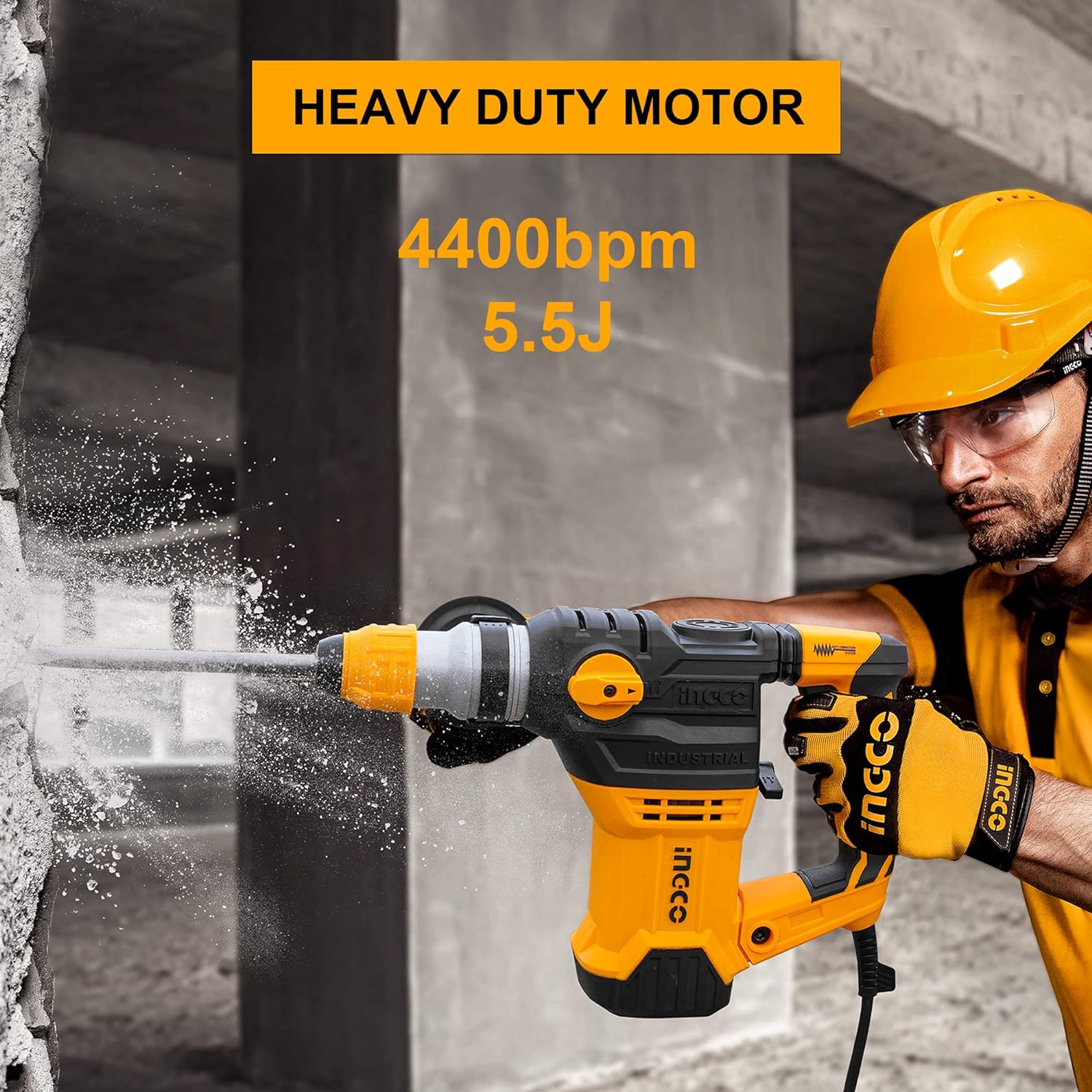A pneumatic rivet gun is a powerful and efficient tool used in metal fabrication, automotive repairs, and industrial applications. While it makes riveting faster and easier, improper use can lead to serious injuries. Understanding and following essential safety precautions will help you avoid accidents and extend the lifespan of your tool.
In this guide, we’ll cover the most important safety tips when using a pneumatic rivet gun, ensuring a smooth and injury-free operation.
1. Wear Proper Personal Protective Equipment (PPE)
Before operating a pneumatic rivet gun, ensure you're wearing the right protective gear to safeguard yourself from flying debris and high-pressure air discharge.
Recommended PPE:
✔ Safety glasses or goggles – Protects your eyes from metal shavings and debris.
✔ Hearing protection – Reduces the risk of long-term hearing damage from the tool’s loud noise.
✔ Gloves – Provides grip and protects your hands from accidental slippage.
✔ Steel-toe boots – Prevents injuries from dropped tools or rivets.
Never operate a pneumatic rivet gun without proper safety gear, especially eye protection.
2. Inspect the Rivet Gun Before Each Use
Before using a pneumatic rivet gun, check for signs of wear or damage. A faulty tool can lead to malfunctions, increasing the risk of accidents.
Pre-Use Inspection Checklist:
✔ Ensure the air hose is securely connected and free from cracks.
✔ Check for loose or worn-out parts, such as rivet heads and trigger mechanisms.
✔ Confirm the air pressure settings are within the tool’s recommended range.
✔ Test the gun by firing a rivet into a scrap piece before working on the actual material.
If you notice any leaks, abnormal noises, or inconsistent performance, stop using the tool immediately and have it serviced.
3. Use the Correct Rivet and Air Pressure
Using the wrong rivet size or excessive air pressure can lead to tool failure and poorly secured joints. Each pneumatic rivet gun has specific requirements for rivet sizes and operating pressure.
Best Practices:
✔ Always match the rivet type with the gun’s specifications.
✔ Set the air pressure according to the manufacturer’s recommendations (typically between 70-90 PSI).
✔ Avoid overloading the rivet gun with excessive force, as this can cause misfires or damage.
Using the correct settings not only ensures safety but also improves riveting accuracy and durability.
4. Maintain a Firm Grip and Proper Stance
When operating a pneumatic rivet gun, maintaining control is crucial to prevent accidental slips or tool recoil.
Proper Handling Tips:
✔ Hold the tool with both hands whenever possible.
✔ Keep a firm but relaxed grip to absorb vibrations.
✔ Maintain a stable stance with feet shoulder-width apart.
✔ Avoid positioning your hands near the rivet's ejection area.
By following these techniques, you can reduce fatigue and maintain precision while riveting.
5. Keep the Work Area Clean and Organized
A cluttered workspace increases the risk of tripping, tool misplacement, and accidental injuries.
How to Keep Your Work Area Safe:
✔ Ensure adequate lighting to clearly see the workpiece.
✔ Keep air hoses neatly arranged to prevent tripping hazards.
✔ Store unused rivets and accessories in designated containers.
✔ Remove metal shavings and debris regularly to prevent slipping hazards.
A well-organized workspace improves efficiency and minimizes the chances of accidents.
6. Disconnect the Air Supply When Not in Use
Never leave a pneumatic rivet gun connected to an air supply when not in use. A sudden trigger pull or an unexpected drop can cause accidental firing, leading to injuries.
Safe Handling Practices:
✔ Turn off and disconnect the air supply before making adjustments or changing rivets.
✔ Store the tool in a dry, dust-free environment.
✔ Use a safety lock if your rivet gun has one to prevent accidental activation.
Following these simple precautions ensures safe operation and prolongs the life of your air rivet gun.
7. Train and Educate Operators Properly
If you’re working in an industrial setting, ensure that all operators are properly trained in handling a pneumatic rivet gun. Even experienced users should receive refresher training to stay updated on best practices.
Training Should Cover:
✔ Proper setup and operation of the tool.
✔ Recognizing potential hazards and how to avoid them.
✔ How to perform routine maintenance and inspections.
✔ Emergency shutdown procedures in case of tool failure.
Investing in proper training enhances workplace safety and ensures all users handle the tool responsibly.
Final Thoughts - Safety First with a Pneumatic Rivet Gun
A pneumatic rivet gun is an invaluable tool, but like any high-powered equipment, it requires responsible usage. By wearing protective gear, inspecting your tool, using the correct air pressure and rivets, and maintaining a clean workspace, you can ensure a safe and efficient riveting process.
Need a Reliable Pneumatic Rivet Gun?
Explore our selection of high-quality pneumatic rivet guns, air rivet guns, and blind rivet guns designed for durability and safety.
Have questions or safety tips of your own? Drop a comment below!





Leave a comment
This site is protected by hCaptcha and the hCaptcha Privacy Policy and Terms of Service apply.